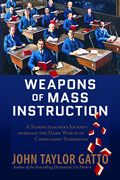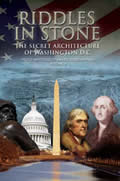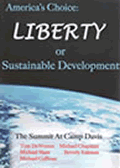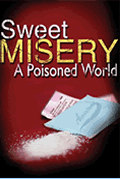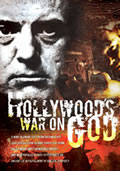PART 3-A
By
Servando Gonzalez
October 11, 2014
NewsWithViews.com
You can either start with fiction or with documentary. But whichever one you start with, you will inevitably find the other. —Jean-Luc Goddard.
The event known as the Cuban missile crisis, to many people the greatest of all Cold War crises, is a milestone in the history of the Cold War. “Generations to come,” praised Time magazine, “may well count John Kennedy’s resolve as one of the decisive moments of the 20th Century.” Yet there is perhaps no single event in recent history as contradictory and puzzling as this one.
The Missile Crisis That Never Was
The official story, parroted over and over in most books and articles about the Cuban missile crisis, tells that on October 15, 1962, CIA’s top photo interpreter Dino Brugioni analyzed the pictures taken by a U-2 flying over Cuba and discovered that the Russians were building what looked like long-range missile sites on Cuban soil. It was not until October 16, however, that President Kennedy was shown the U-2 photos that, according to CIA officers and Kennedy’s close advisors, provided irrefutable proof that the Soviets were installing ground-to-ground missile bases with nuclear capability in the Island.
There is, however, a big problem with that theory. Despite most of what has been written, about the Cuban missile crisis, some key questions about the crisis have never been properly answered. I am offering below a few pieces of the puzzle that are still missing, but these are not the only ones.
Question 1. Soviet Premier Nikita Khrushchev wrote in his Memoirs that the idea of placing nuclear missiles in Cuba to defend the Castro government from an imminent American attack came during a trip he made to Bulgaria from 14 to 20 May, 1962. But this is difficult to believe, because just a few days earlier, on May 5, Cuban Ambassador Faure Chomón definitely had returned from Moscow and his successor, Carlos Olivares, who was appointed twelve days later, still remained in Cuba without presenting his credentials to the Soviet government. The unexpected replacement of Chomón and his urgent return to Cuba coincided with the discovery and subsequent neutralization by Fidel Castro of a coup attempt to overthrow him. The failed coup had been coordinated by the Soviet ambassador in Havana, Sergei Kudryavtsev, and seconded by several key members of the traditional pro-Soviet Cuban Communist Party.
Ambassador Kudryavtsev, whom John Barron in his book KGB calls a “master of subversion,” had another job besides being ambassador. His real mission was to act as a senior Soviet KGB intelligence officer in Havana and prepare the conditions for a takeover by the Russians after overthrowing Castro. But Castro discovered the plot and summarily expelled Kudryavtsev from Cuba along with a group of his embassy officials and KGB agents on 20 May 1962. However, as senior Soviet intelligence officers never act motu proprio, but strictly by-the-book, one can safely surmise that Kudryavtsev’s anti-Castro activities followed orders from the top Soviet leadership, most likely from Khrushchev himself.
In diplomatic language, when two countries respectively withdraw their ambassadors, it means that the relations are at a very low point, usually close to a breakup. Why was precisely after a failed attempt to overthrow Fidel Castro and when relations between the two countries were so unfriendly, that Khrushchev got the wild idea of placing nuclear missiles in Cuba allegedly to protect Castro from an American attack? Was Khrushchev crazy?
Question 2. According to most American authors who have studied the crisis, a key element in its successful solution by President Kennedy was the important role played by Oleg Penkovsky, a colonel in Soviet military intelligence (GRU), who had been recruited by the CIA. It was a remarkable coincidence, these authors said, that a few months before the crisis Penkovsky had provided the CIA with a copy of the operating manual of exactly the same type of missiles that the Soviets later emplaced in Cuba. Penkovsky was arrested by the Soviet authorities a day before the beginning of the crisis and allegedly sentenced to death and executed some months later. Even today, the recruitment of Penkovsky is considered one the CIA’s greatest successes, which contributed greatly to restoring the lost prestige after the resounding failure of the Bay of Pigs invasion.
But top officials of the MI6, the British intelligence service, had a very different opinion about Penkovsky. To them, who were those who made the first contacts with the Soviet officer and then passed him on to the CIA, Penkovsky was the main element of a disinformation operation of the Soviet intelligence. Apart from the irregular way in which Penkovsky was recruited — Penkovsky tried on several occasions to be recruited by British intelligence, but they always refused because they suspected he was an agent provocateur — there is strong evidence indicating that, from their first contact with the British, Soviet intelligence was aware of Penkovsky’s activities.
For this and other reasons, Peter Wright, the famous British spy hunter and former deputy director of MI5 (the British FBI), was convinced that Penkovsky was a key element in a Soviet disinformation operation.
So if, as it appears, Penkovsky actually worked for the Soviet intelligence services, or they had him under surveillance because from the beginning they knew of his treachery, why did they allow Penkovsky to give the CIA such detailed information about exactly the type of missiles they planned to deploy in Cuba, which later helped the CIA to identify them on Cuban soil?
Question 3. According to secret Soviet government documents, made available to researchers a few years ago, Soviet officers in Cuba had complete autonomy over the use of nuclear missiles, to the point where they can fire them at will without the express permission of Moscow. If true, this would have violated all procedures established by the Soviet army on the use of nuclear weapons.
The Soviets had always been very careful in the control of their nuclear weapons, to the point that, although the Army officers had control over rocket artillery missiles with conventional warheads, the nuclear warheads remained apart, controlled by special units of the KGB Spetsnaz. According to their standard operating procedure, the mating of nuclear warheads to missiles was made only following express orders strictly validated by the Soviet high command after having been authorized by the Prime Minister. These regulations were in place before the crisis and maintained thereafter. So, why the Soviets, as alleged in the case of the missiles in Cuba, so drastically violated strict security procedures established by the Soviet military doctrine on the use of nuclear weapons?
Question 4. In its issue of November 24, 1990, the French magazine Le Monde published parts of a secret speech that Fidel Castro addressed to the Central Committee of the Cuban Communist Party in 1968, in which he confessed his "immense love" for the nuclear missiles the Soviets had deployed on Cuban soil. It is known that, on October 22, at a critical moment of the crisis, Cuban army units assaulted and occupied for several hours a battery of Soviet anti-aircraft missiles in the eastern part of Cuba, until Soviet special units outmanned them, with heavy casualties on both sides. That was the battery that shot down a U-2 during the crisis. The unusual fact was later published in the Washington Times by Daniel Ellsberg, then an intelligence analyst for the U.S. Defense Department, and later confirmed by Adrian Montoro, ex-director of Radio Havana Cuba, in an article he wrote for the New York Times.
Those who participated in the crisis on the U.S. side repeatedly mentioned Khrushchev's inexplicable folly of placing nuclear missiles in Cuba. All agreed that just a single nuclear missile fired from Cuban territory to the United States would have caused a devastating U.S. military response directed not only against Cuba, but also against the Soviet Union. Why Khrushchev, who was no fool and knew perfectly well the extraordinary love that trigger-happy Fidel felt for the nuclear missiles, placed so dangerously close to Castro the nuclear trigger that could have brought the total destruction of the Soviet Union?
Question 5. According to the official story, what finally convinced Castro, who at first was not all happy with the idea of accepting the missiles, was the confirmation that President Kennedy was planning an attack on the island. The ultimate proof was shown to him in the confidential notes of a conversation that Soviet journalist Alexei Adzhubei, Izvestia’s editor and Khrushchev’s son-in-law, had with President Kennedy a few days earlier while he was vacationing in Hyannis Port, Massachusetts. According to Adzhubei, Kennedy had brought up the subject of the Soviet invasion of Hungary in 1956, reminding him that at that time the United States had not intervened. This, according to the Soviets, was a clear warning that when the Americans invaded Cuba, the Soviets, in return, should refrain from intervening.
The problem with this theory is that some people who were at the meeting have denied time and again that Kennedy had mentioned Hungary during the interview, much less that the U.S. had plans for an invasion of Cuba. All information in this regard seems to confirm the veracity of the American version. Apparently the secret report was a lie specially designed by Adzhubei to convince Castro to accept the missiles. Apparently, Khrushchev was so eager to convince Castro into accepting the missiles that he went to the point of lying about an impending American attack that did not really exist. But, why?
Question 6. Available evidence shows that what Fidel Castro really wanted at the time was that the Soviet Union admitted Cuba to the Warsaw Pact or at least sign a separate military treaty with the Cuban government. But, if one is to believe Premier Khrushchev, the best solution to protect the government of Fidel Castro from a U.S. invasion was installing nuclear missile bases in Cuba.
According to secret Soviet documents brought to light a few years ago, when Americans discovered what looked like strategic missile bases on Cuban soil, the missiles were ready to be fired, and nuclear warheads were already in the island, ready to be mated with the missiles. But, surprisingly, as the crisis went on, Khrushchev gave in to U.S. pressure and withdrew the missile bases from Cuba. In his memoirs, the Soviet leader claims that his decision was because he had received concrete evidence that Kennedy had decided to launch an attack on Cuba.
So, according to his logic, Khrushchev placed nuclear missiles in Cuba to deter or repel an American attack on the island, and then withdrew them when he was told that the U.S. was going to attack Cuba. Khrushchev’s strange behavior cannot be explained by cowardice or incompetence, because the Soviet military often demonstrated its courage and military expertise of war technology in the war against the Nazis. Why, then, Khrushchev withdrew the missiles at the precise moment when they could have been used for the purpose for which they allegedly were installed in Cuba? This explanation does not make any sense.
Question 7. Most American authors who have studied the crisis believe that Khrushchev made a huge miscalculation when he placed nuclear missiles in Cuba, because instead of discouraging an American attack, actually encouraged it. But there are elements that suggest that, contrary to what these authors’ claim, Khrushchev did not commit any error in calculation.
In its National Intelligence Estimate (NIE) circulated in September 1962, just a few days before the crisis, CIA intelligence analysts, despite all the rumors that the Soviets were building strategic missile bases in Cuba, refused to consider this possibility. The main reason, experts and intelligence analysts from the CIA concluded, was that the Soviets had never transferred nuclear warheads beyond its borders. Another important reason was that Khrushchev had to be aware that the installation of nuclear missile bases in Cuba would trigger a devastating U.S. attack on the island. Soviet secret documents and references made in Khrushchev's own memoirs seem to confirm this view. If this is true, why did Khrushchev order building what looked like strategic nuclear missile bases in Cuba in the knowledge that, far from discouraging a U.S. attack, this would surely provoke it?
Question 8. One aspect that caught the attention of CIA’s intelligence analysts was that the Russians had not tried to conceal or camouflage the missile bases. In photos taken by U-2s, the bases are perfectly defined, without any camouflage concealing them. This is very strange, because the Soviets were known experts at masking and disguising. Maskirovka always constituted an important aspect of Soviet military tactics, and camouflaging techniques always received special attention in Soviet military schools. However, it was not until October 23, a day after Kennedy announced on television the discovery of strategic missile bases on Cuban soil, that the Soviets began hastily attempting to camouflage them.
The fact that the Soviet officers used no camouflage to mask the missile bases caused deep unease among some senior Cuban officials, including Che Guevara. In a secret speech delivered months later to senior members of his “Communist” party,” Castro mentioned the unexplainable fact that the Soviets didn’t try to camouflage the missile bases, and said that he thought the Soviets had done it on purpose. If, as it appears, this is true, why did the Soviets want the Americans to discover the missile bases?
Question 9. The facilities that looked like strategic nuclear missile bases were surrounded by real anti-aircraft missile batteries (SAMs), whose primary purpose was to protect the bases against air raids, particularly from spy planes. But engineering students at the University of Havana, who had been assigned as advisers to the radar units of the Soviet SAM bases, observed how their radar screens showed the U-2 flying unmolested over the bases without Soviet officials making the minimum attempt to shoot them down.
This Soviet behavior angered the Cuban students, who did not understand the cause of the Soviet’s lack of interest in shooting down the spy planes. This anger grew to the point that on some bases it reached almost to the level of a revolt. Only the presence of Che Guevara, called urgently to the SAM batteries, managed to calm them down. However, when he in turn informed Castro about the situation on the batteries, Guevara told him that he himself did not understand the Soviet’s behavior. Why did the Soviets not attempt to shoot down American spy planes with the very anti-aircraft missile batteries whose sole purpose was to bring down American spy planes?
Question 10. According to the official U.S. version of the facts, what sparked the crisis were the photos taken by a U-2 spy plane flying over the western part of Cuba on October 14. The truth, however, is that since August the U.S. intelligence services were certain that there were installations that looked like strategic Soviet missile bases on Cuban soil. Between August 31 and October 10, Senator Kenneth Keating had made fourteen public statements and ten speeches in the Senate, denouncing the inaction of the Kennedy administration about the existence of missile bases in the western part of Cuba. Cuban refugees, who were flying from Cuba to Florida by the hundreds, commented on the strange activities of the Russians in the western part of the island.
However, despite all the evidence pointed towards the west, Kennedy suddenly banned the U-2 from flying over the western part of Cuba, and flights were concentrated in the eastern region. It was not until the pressure of public opinion stirred by Senator Keating became intolerable that Kennedy ordered to resume flights over the western part of the island. It was in this first flight after the restart of the flights that a U-2 plane photographed what looked like strategic missile bases. Why did Kennedy not want the U-2s to discover the Soviet missiles in Cuba?
Question 11. According to the official U.S. version of the crisis, the high definition photographs taken by a U-2 plane on October 14 provided incontrovertible evidence of the presence of nuclear missiles in Cuba. But the fact remains that nobody actually saw the missiles, much less touched them. What we have seen are photos of some construction sites that CIA analysts thought were similar to what they believed were strategic missile sites appearing in photographs taken by U-2s flying over the Soviet Union.
However, in his book The Soviet Army, former Soviet officer Victor Suborov tells how, in the early Sixties, nuclear missiles that paraded through Red Square were actually dummies. The Russian tradition in the art of maskirovka and disinfomatzia to mislead goes back to the times of Grigori Aleksandrovich Potemkin. During WWII, they built a large factory west of the Ural Mountains exclusively dedicated to the manufacture of all kinds of war material of props, from inflatable rubber tanks to wooden MiGs and dummy missiles.
The CIA subsequently admitted that it had no agents in the field that might have physically verified the existence of the strategic nuclear missiles on Cuban soil. When the Soviets were shipping back to the Soviet Union what they claimed were strategic nuclear missiles, Kennedy had an excellent opportunity to order the Navy to board the ships and physically verify the withdrawal of the missiles, but he did not. Why did Kennedy decide not to verify the existence of the missiles and their actual withdrawing from Cuba?
Furthermore, the U-2 photos, which allegedly provided incontrovertible proof of the existence of nuclear missiles on Cuban soil, have been published in high resolution and are available on the web.[1] Surprisingly, such photos only show long objects covered with tarps and a few concrete bunkers which allegedly contained the nuclear warheads. But the nuclear missiles do not appear anywhere. So, why do most books and articles about the crisis continue to maintain the theory that the U-2 pictures provided irrefutable proof that there were medium-range strategic nuclear missiles on Cuban soil in 1962?
Moreover, given the Soviet’s expertise in military deception, even if the U-2 photos would have shown what seemed like nuclear missiles it would not have proved anything. A photo of a missile — or what looked like a missile— is not a missile.
|
|
Question 12. According to documents declassified after the fall of the Soviet Union and accounts of some Soviet officers who participated in the operation, when the missiles were discovered by the U-2s, their nuclear warheads were already in Cuba, and were later returned to the Soviet Union together with the missiles. However, despite the fact that all U.S. documents of the crisis assumed that the nuclear warheads were on Cuban soil, this was never proved. Moreover, as Kennedy refused to authorize offshore in situ verification, the presence of nuclear warheads on the Soviet ships was never confirmed.
But there is something even more important. From the early Sixties the U.S. had the technology for the remote detection of gamma radiation from nuclear warheads. By the time of the missile crisis, the U.S. had installed in the Dardanelles some powerful equipment that can detect radiation and the presence of nuclear warheads on Soviet submarines sailing through the Strait. However, none of the official documents produced during the crisis has revealed information that these teams had registered radiation from Soviet ships crossing the Strait supposedly carrying nuclear warheads to Cuba.
Many of the photos taken during the crisis show U.S. Navy aircraft flying over Soviet ships only a few feet above the masts. Presumably, some of these aircraft carried equipment capable of detecting gamma radiation. But no information whatsoever has been offered about detecting radiation from nuclear warheads on the ships allegedly carrying missiles and nuclear warheads back to the Soviet Union. So, if the Soviets really had nuclear warheads in Cuba, why had nobody ever detected radiation from them?
Click here for part -----> 1, 2, 3a, 3b,
� 2014 Servando Gonzalez - All Rights Reserved
Footnotes:
1. See this link. The ever-lying Wikipedia has published a U-2 photo claiming that “This U-2 reconnaissance photo showed concrete evidence of missile assembly in Cuba. Shown here are missile transporters and missile-ready tents where fueling and maintenance took place.” The photo, however, actually shows nothing resembling Soviet strategic nuclear missiles on Cuban soil. Also, how did they know that fueling and maintenance of the missiles took place under the tents?
Servando Gonzalez, is a Cuban-born American writer, historian, semiologist and intelligence analyst. He has written books, essays and articles on Latin American history, intelligence, espionage, and semiotics. Servando is the author of Historia herética de la revolución fidelista, Observando, The Secret Fidel Castro: Deconstructing the Symbol, The Nuclear Deception: Nikita Khrushchev and the Cuban Missile Crisis and La madre de todas las conspiraciones: Una novela de ideas subversivas, all available at Amazon.com.
He also hosted the documentaries Treason in America: The Council on Foreign Relations and Partners in Treason: The CFR-CIA-Castro Connection, produced by Xzault Media Group of San Leandro, California, both available at the author's site at http://www.servandogonzalez.org.
His book, Psychological Warfare and the New World Order: The Secret War Against the American People is available at Amazon.com. Or download a .pdf copy of the book you can read on your computer, iPad, Nook, Kindle or any other tablet. His book, OBAMANIA: The New Puppet and His Masters, is available at Amazon.com. Servando's book (in Spanish) La CIA, Fidel Castro, el Bogotazo y el Nuevo Orden Mundial, is available at Amazon.com and other bookstores online.
His most recent book, I Dare Call It treason: The Council on Foreign Relations and the Betrayal of the America, just appeared and is available at Amazon.com and other bookstores online.
Servando's two most recent books in digital versions only are The Swastika and the Nazis: A Study of the Misuse of the Swastika by the Nazis and the first issue of the political satire series OBSERVANDO: American Inventors.
Website: www.servandogonzalez.org
E-Mail: servandoglez05(at)yahoo(dot)com



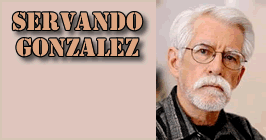
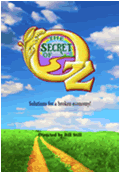

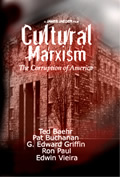
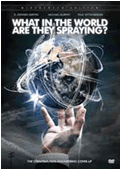
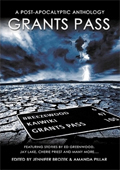




 Share
This Article
Share
This Article